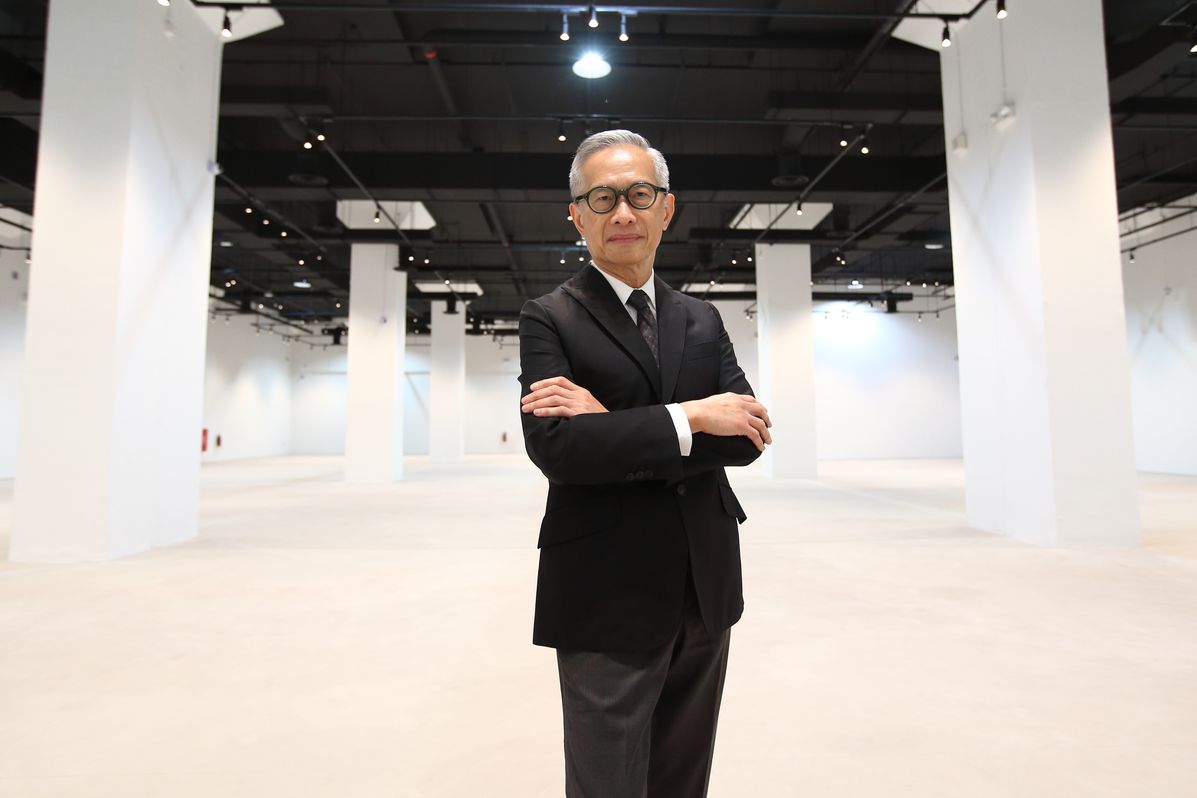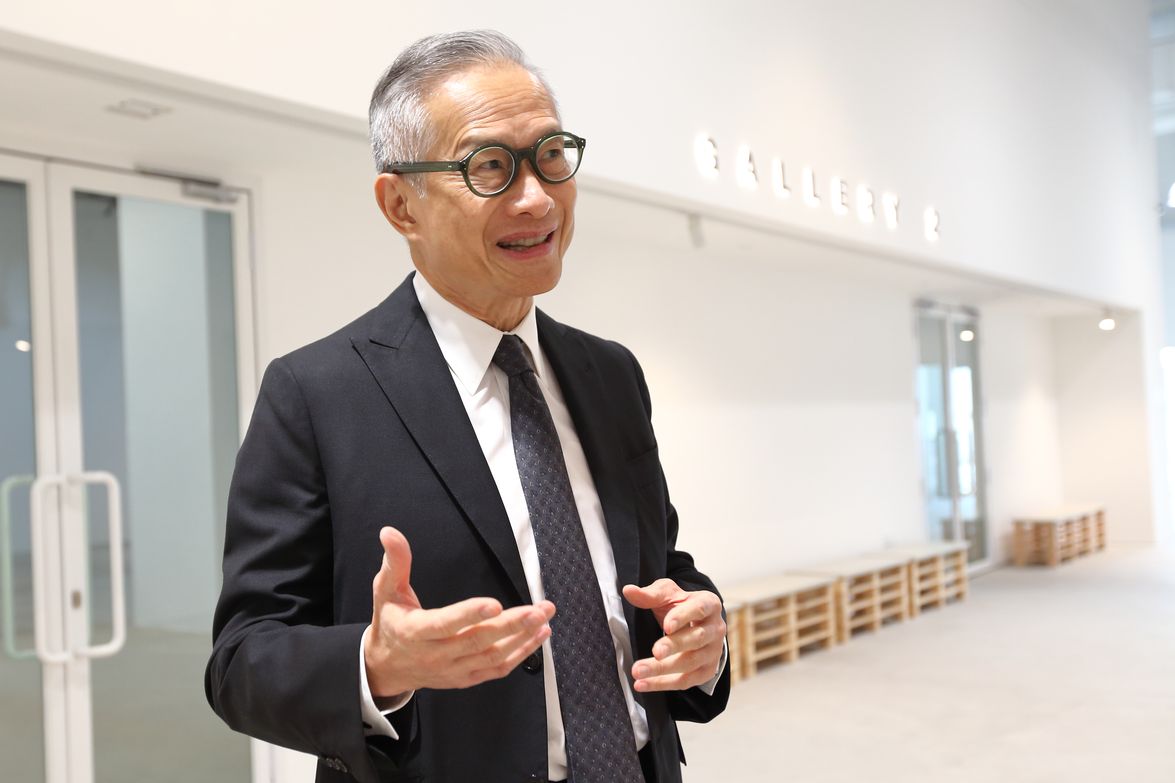Edmund Cheng, the chairman of Singapore Art Museum, recently gave us an interview to talk about the opening of SAM at Tanjong Pagar Distripark (TPD) on Keppel Road. It was the first time that I was meeting Cheng, and I immediately felt his enthusiasm about his task for the afternoon.
Cheng is chairman — or has at one time served as one — of some major government, civic, and business organizations in Singapore, as well as the recipient of numerous public service awards. His involvement in the arts, in various capacities, is well-documented.
He has spearheaded ground-breaking arts initiatives, raised serious amounts of money for them, and seen to their longevity; I couldn’t think of another person who would do a better job of persuading anyone why the presence of SAM in an industrial warehouse is an interesting proposition.
- SAM OF MANY PARTS
- AN EARLY START
- PUTTING ART INTO THE PICTURE
- CONSISTENT SUPPORT
- NEW VENUE, NEW ENERGY
SAM of Many Parts

Before the interview, Cheng and some representatives from SAM walk us around the area that the museum occupies. The enormity of the space gradually becomes evident: What is just another stretch of industrial bleakness on the outside reveals an internal expanse of light, air, and levity.
The main entrance on the first level opens to a passage, with the foyer in front and a planned F&B space at the back. Lined up along this passage are two enormous gallery spaces, climate-controlled and with ceilings six-meters high. Down at the end, across from the planned café, is The Engine Room, a multi-purpose space. Together they occupy over 2,000sqm of floor space.
SAM at TPD also occupies a second space of over 1,300sqm on the building’s third level. It houses the SAM Residencies Studios and corporate office—an arrangement that, according to official communique, “gives SAM staff, residents and the public greater opportunities for social interaction and engagements” in the art studios and a shared workspace, an experimental ideas lab, and a central open space known as The Main Deck, which can be used for public functions.
- SAM OF MANY PARTS
- AN EARLY START
- PUTTING ART INTO THE PICTURE
- CONSISTENT SUPPORT
- NEW VENUE, NEW ENERGY
An Early Start
Born in Hong Kong in 1952, Edmund Cheng Wai Wing was educated in the US. He moved to Singapore in 1979, armed with a bachelor’s degree in Civil Engineering from Northwestern University, and a dream of pursuing a master’s in architecture, which he obtained from Carnegie Mellon University the following year.
Sitting in an armchair in his SAM at TPD office, Cheng is elegant in an impeccably tailored black suit that matches his flawless manners. He recalls developing an interest in the arts as a young boy, drawing rudimentary houses – “a pitched roof, a window with a cross, and a door”, learning about architectural models, and capturing images with his mother’s East German-made camera.
“When I was in Primary 5, my eldest brother’s classmate was dating my sister, and he would come to our place,” he recounts. “During those visits, he would show me his architectural drawings and models, and explain how they worked. Later on, he let me help build things.”
When time came to enter the university, he enrolled in an arts and science program at Northwestern University, where he eagerly pursued arts and design electives. Two years later, upon discovering that the school didn’t have an architecture faculty, he decided to pursue engineering rather than starting over.
- SAM OF MANY PARTS
- AN EARLY START
- PUTTING ART INTO THE PICTURE
- CONSISTENT SUPPORT
- NEW VENUE, NEW ENERGY
Putting Art Into the Picture
In the early 1990s, Cheng was invited to join the Singapore Tourist Promotion Board (STPB); by then he was already holding key positions at property developer Wing Tai, and at real estate-related organizations REDAS, URA, and CIDB.
When STPB eventually became Singapore Tourism Board, with a thrust to actively develop new tourist attractions, Cheng ensured that arts development was central to that mission. He has by then incorporated art in various development projects at Wing Tai through commissions or holding competitions.
The government allocated a sizeable budget for the effort, which covered a range of art acquisitions and arts festivals, gradually laying the foundation for an arts and culture rich Singapore.
- SAM OF MANY PARTS
- AN EARLY START
- PUTTING ART INTO THE PICTURE
- CONSISTENT SUPPORT
- NEW VENUE, NEW ENERGY
Consistent Support
In the following years, Cheng actively continued to champion landmark arts projects. These included the salvaging of a derelict church building on Middle Road in 1999 that, with his friend, the renowned artist Sun Yu Li, was transformed into Sculpture Square.
In 2006, at the VivoCity shopping mall complex, Cheng, together with Fumio Nanjo, led the unveiling of a permanent collection of public art comprising seven works by one local and six international artists. The project marked the first Singapore Biennale, with Nanjo as artistic director.
In 2010, Cheng vigorously promoted the insertion of artworks throughout the integrated business hub, Mapletree Business City Phase 1 (MBC 1). This strategy was reprised at MBC 2, where international curator and academic Ute Meta Bauer, was engaged to curate and install an important collection of works by leading artists from around the world.
- SAM OF MANY PARTS
- AN EARLY START
- PUTTING ART INTO THE PICTURE
- CONSISTENT SUPPORT
- NEW VENUE, NEW ENERGY
New Venue, New Energy

Cheng’s excitement over the opening of SAM at TPD appears genuine. He has been a consistent champion of bringing art to where the people are; this is no exception. “We want people to experience and interact with art in their neighborhoods and places of work.”
The new address remains quiet where arts activities are concerned, with only Artspace@Helutrans and Gajah Gallery probably sustaining interest from the arts community. However, with the National Arts Council announcing plans for a “multidisciplinary arts cluster” in the area, the industrial facility will hopefully come to life.
SAM at TPD’s very strong opening calendar of exhibitions supports this mission with presentations by art rock, experimental, and electronica band The Observatory (Singapore), contemporary visual artist Gan Siong King (Malaysia), and video and multimedia artist Korakrit Arunanondchai (Thailand and USA). The rest of the year will see immersive exhibitions that define and articulate the arc of contemporary art.
“With SAM at TPD, we will reach out to a new audience,” Cheng confidently declares, although he does not discount SAM’s loyal following to show up.
For more information on SAM, full museum program, and calendar, click here













 Back
Back
